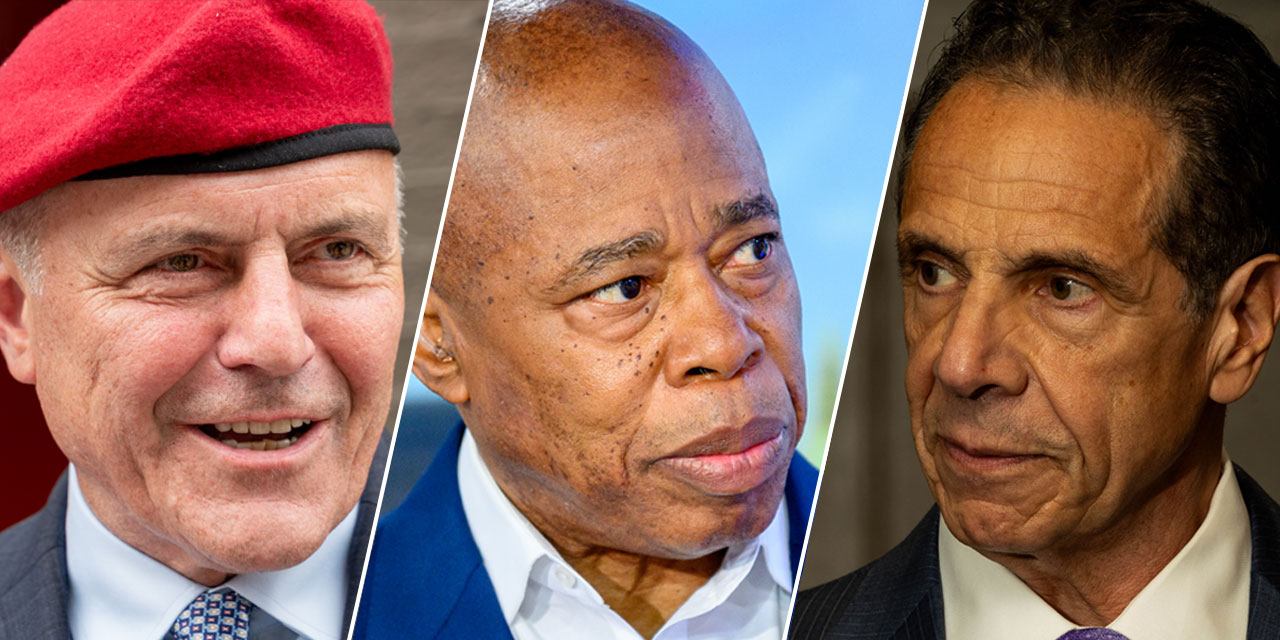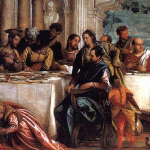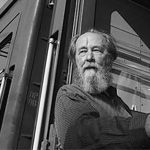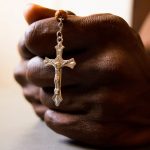
Tomorrow, the most consequential New York City general election season in decades will begin in earnest. Zohran Mamdani, the 33-year-old Democratic nominee, heads into the post-Labor Day sprint with steady momentum from his June primary upset. The most important unresolved issue: Will the socialist face one, two, or three challengers?
Mamdani’s main rivals—former governor Andrew Cuomo and incumbent mayor Eric Adams (both running as independents), and Republican nominee Curtis Sliwa—are locked in a prisoner’s dilemma. The candidates have two options: remain in the race or drop out. If all three stay in, Mamdani is almost certain to win, though each retains a small chance. If some step aside—albeit at the expense of their political careers—Mamdani faces tougher odds. (Attorney Jim Walden is also running as an independent.)
Polls show little movement. American Pulse Research, for example, surveyed New Yorkers in late June and mid-August. The stability of their results suggests that voters have largely made up their minds.
American Pulse Survey (in percentages)
| June 2025 | August 2025 | |
| Zohran Mamdani | 35.2 | 36.9 |
| Andrew Cuomo | 29.0 | 24.6 |
| Eric Adams | 13.8 | 11.4 |
| Curtis Sliwa | 16.1 | 16.8 |
| Jim Walden | 1.4 | 2.1 |
| Another Candidate | 1.2 | 0.7 |
| Not Sure/Don’t Know | 3.3 | 7.5 |
Since the start of his ascent, the big question about Mamdani has been: Where is his electoral ceiling? His victory in a closed Democratic primary made clear that his appeal extends further than far-left voters, but how much further? His campaign, powered by more than 40,000 Democratic Socialists of America (DSA) volunteers, registered 37,000 voters in the two weeks prior to the primary registration deadline—over 12 times the total registrations in the last two weeks before 2021’s primary deadline. Many new registrants came from heavily South Asian neighborhoods and have backgrounds that resemble Mamdani’s.
November’s outcome may ultimately hinge on the strength of the campaigns’ get-out-the-vote operations—where Mamdani has already demonstrated considerable ability. Many of these new registrants are likely to join his left-wing base from the primary to back him again. But if he’s already activated almost every potential supporter, he might be approaching his electoral ceiling.
Unlike the primary, the general election will be open to about 1.8 million unaffiliated, Republican, and third-party voters. Mamdani’s challengers are likely to have an advantage among most of these non-leftist voters. The Manhattan Institute’s focus group of 11 New Yorkers from across the city’s boroughs and different backgrounds also revealed that “soft” Mamdani supporters have serious reservations about him. The young socialist’s polarizing nature, inexperience, and practical inability to accomplish his agenda represent impediments to further inroads. The focus group suggested that Cuomo has the most to gain at Mamdani’s expense.
The polls also suggest that Cuomo is Mamdani’s most viable challenger, despite his loss in the Democratic primary. The former governor spent part of the summer trying to reinvent his image, admitting that he made mistakes in the primary and vowing to press the case against Mamdani. But with most of the union backing that Cuomo previously received now gone to Mamdani, Cuomo has little campaign support on the ground. His reliance on television and direct mailers notably failed in the primary.
These limitations mean that the most significant potential boost to Cuomo’s campaign lies outside of his control: having Adams and Sliwa drop out. A poll released on Wednesday showed that Cuomo would defeat Mamdani in a head-to-head matchup, 52 to 41 percent.
Meantime, Adams and his campaign have been embroiled in two new corruption-related incidents. On August 20, his longtime campaign operative Winnie Greco allegedly attempted to hand a local journalist a potato-chip bag holding a red envelope with $300 in cash. It then emerged that the Adams campaign supporters had been spotted handing out similar envelopes at Chinese-language media events—a custom of “thank you gifts” ostensibly common in China. Adams denies knowledge of such cash handouts.
The next day, the Adams campaign took a second punch when Ingrid Lewis-Martin, the mayor’s longtime confidant and former chief advisor, was arrested on four bribery-related conspiracy indictments. The once-powerful “Lioness of City Hall” is alleged, among other things, to have received $50,000 in exchange for steering emergency migrant contracts and fast-tracking a permit for a Queens karaoke bar. These new charges come on top of Lewis-Martin’s bribery indictments from last year.
Without the prospect of a comfortable career in law or another lucrative profession, Adams has limited alternatives for life after office. His appeal would diminish further if the corruption-tarred mayor finishes in fourth place and helps deliver the election to Mamdani—an outcome the polls currently predict. Were he to drop out of the race, by contrast, he could plausibly claim to have spurned personal ambition to spare the city from extremism. He then might parlay his one-term mayoralty into a local media role—perhaps as an on-air critic of the next mayor, whoever that might be.
Sliwa has likewise vowed to remain in the race. The Guardian Angels’ founder spoke, sans beret, with Manhattan Institute scholars last week (including me) to explain his vision for New York. He decried bail reform, offering support for President Donald Trump’s recent executive order discouraging the elimination of cash bail and blasting Cuomo for signing bail reform into law in 2019.
Sliwa’s theory of the race hinges on maintaining his 28 percent share of the vote from 2021, plus potentially a few points from his “Protect Animals” ballot line. In a split field with multiple candidates to Mamdani’s right, however, that goal is far from a given.
President Trump remains the race’s biggest X factor. The former New Yorker said in August that he would not let a “communist lunatic destroy New York.” He also intimated that he would send federal law-enforcement officers into the city, which would change the focus of the race from affordability, Mamdani’s strong suit, to two of his weakest areas—personal competence and public safety.
Such a move could also backfire, galvanizing New Yorkers to vote for the furthest-left candidate to spite the president. Should Mamdani win, Trump is certain to attempt to pick up seats in next year’s congressional midterms by stressing the dangers of socialism extended nationwide.
Money is starting to pour into the race, which is likely to break funding records given that general elections are usually uncompetitive. In mid-August, the pro-Cuomo Fix the City PAC raised $1.26 million in a week, while Mamdani’s campaign took in $1.05 million. But the primary election—in which Cuomo and Fix the City outspent Mamdani by a record $22 million to $8 million—demonstrated that money matters less than social media stardom and volunteer boots on the ground.
While the millennial Mamdani is unquestionably the most gifted communicator on the ballot, Adams has demonstrated some acumen in recent posts on Instagram and TikTok. Sliwa has shown his social-media followers videos of him approaching the city’s street homeless and cleaning parks. Cuomo is attempting a twofold strategy—sporting short sleeves in one-on-one talks with small-business owners while also holding suited press conferences seated at a long table and flanked by flags—the latter a format that recalls his popular daily news conferences during the Covid pandemic.
In the most important general election of New York’s modern era, the boldest move for some of Mamdani’s challengers would be to step aside. That’s the toughest request of all for big egos.
Photos: Spencer Platt/Getty Images (left) / Roy Rochlin/Getty Images (center) / Alex Kent/Getty Images (right)

















